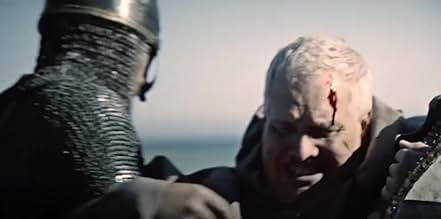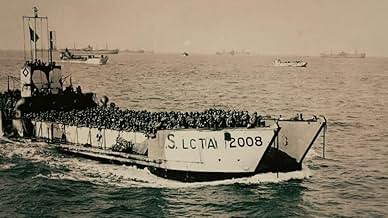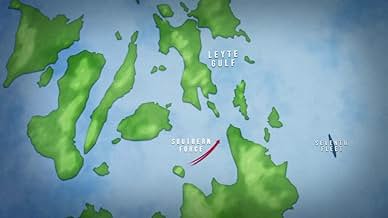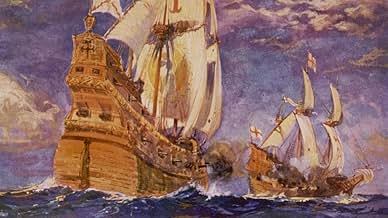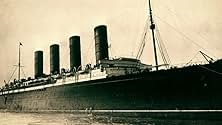A documentary series on combat ships through the ages, from the 16th century to the present day.A documentary series on combat ships through the ages, from the 16th century to the present day.A documentary series on combat ships through the ages, from the 16th century to the present day.
Browse episodes
Featured reviews
I have only seen two episodes of this series, on D-day and on torpedo boats. They are generally sound, and the interviews with veterans and footage of preserved ships are particularly interesting. On the basis of this 90 percent of the content, I would have given this series an 8 or better.
Unfortunately the series is marred by the hype and conspiracy-mongering so standard in television historical documentaries. In the torpedo-boat episode, the producers trot out that tired staple of World War II naval or D-day documentaries, the great conspiracy to hide the E-boat attack on U.S. LSTs training off Slapton Sands, England on the night of 27-28 April 1944. We are once again told that this story was hidden for decades until intrepid truth-tellers could reveal it.
A glance at the U.S. Army official history, "Crossing the Channel," published in 1950, reveals" "One of the convoys of exercise TIGER was attacked by two German E-boat flotillas totaling nine boats. Losses were heavier than those suffered by Force U during the actual invasion" (p. 270). Some cover-up! Similarly, in 1957 Samuel Eliot Morison, in his semi-official history of the U.S. Navy in the war, devoted almost an entire page to a description of the E-boat attack on the LSTs and the losses suffered in "Invasion of France and Germany" (p. 66).
Before the series gets any further, I will note preemptively that much the same can be said of another favorite of the "Now it can be told!" set, the sinking of the transport LEOPOLDVILLE with troops of the U.S. 66th Infantry Division off Cherbourg on Christmas Eve 1944. Not only does Morison include the incident, but the New York Times described it as early as 14 June 1945.
It is unfortunate that for so many documentary-makers, real history is so dull that it has to be dressed up with hype like this. And it is a particular shame to see this in what otherwise appears to be a good series.
Unfortunately the series is marred by the hype and conspiracy-mongering so standard in television historical documentaries. In the torpedo-boat episode, the producers trot out that tired staple of World War II naval or D-day documentaries, the great conspiracy to hide the E-boat attack on U.S. LSTs training off Slapton Sands, England on the night of 27-28 April 1944. We are once again told that this story was hidden for decades until intrepid truth-tellers could reveal it.
A glance at the U.S. Army official history, "Crossing the Channel," published in 1950, reveals" "One of the convoys of exercise TIGER was attacked by two German E-boat flotillas totaling nine boats. Losses were heavier than those suffered by Force U during the actual invasion" (p. 270). Some cover-up! Similarly, in 1957 Samuel Eliot Morison, in his semi-official history of the U.S. Navy in the war, devoted almost an entire page to a description of the E-boat attack on the LSTs and the losses suffered in "Invasion of France and Germany" (p. 66).
Before the series gets any further, I will note preemptively that much the same can be said of another favorite of the "Now it can be told!" set, the sinking of the transport LEOPOLDVILLE with troops of the U.S. 66th Infantry Division off Cherbourg on Christmas Eve 1944. Not only does Morison include the incident, but the New York Times described it as early as 14 June 1945.
It is unfortunate that for so many documentary-makers, real history is so dull that it has to be dressed up with hype like this. And it is a particular shame to see this in what otherwise appears to be a good series.
According to this series, nobody but the british and US fleets has Any ships worth mentioning. Awfull properganda.
But there Are some beautiful old fotage of the batles and the ships.
But there Are some beautiful old fotage of the batles and the ships.
It would of bin nice if when they showed the boats n ships that they showed some specifications for it like how fast it could go(in knots), how many people it took to run it as crew, how much weight in haulage it could store, thickness in armor,etc. But it somewhat does that but it finds the part on the screen that is white, then puts white writings over that part so u can't see what is written. Like im watching the one on vikings atm and have it paused n all i can see is the lower half of age and the lower half of 24 then after it says ions. So i think its saying "haulage 24 tons" and that is the easyest one to read! Othere's just look like they split up some land in the background to look like small islands. N when they do this u can see it's on purpose cause it's the one spot on the screen that is white when the rest is a darker color that would make it very easy to see what is written in white!
A documentary series on combat ships through the ages, from the 16th century to the present day.
Reasonably interesting though flawed. Covers some lesser-known seacraft, including cockleshell canoes, hospital ships and intelligence-gathering craft. However, there is no progression to the series - each episode is independent of the others and is in random order - so you get no feeling for the research, development and evolution involved. Plus, while including the lesser-known craft is novel and at times edifying, these topics feel a bit flat. I guess that's why these craft are not often covered...
The interviews also leave a lot to be desired. Many of the "experts" are just cheerleaders, spewing hyperbole. The narrator is generally okay but, despite being English, insists on saying "nuke-u-ler" for "nuclear". Maybe they wanted to appeal to an American audience...
He also bungles some of his lines and gets away with them. For example, saying that a Landing Craft could carry 120,000 tons of cargo...
Overall, okay but not great.
Reasonably interesting though flawed. Covers some lesser-known seacraft, including cockleshell canoes, hospital ships and intelligence-gathering craft. However, there is no progression to the series - each episode is independent of the others and is in random order - so you get no feeling for the research, development and evolution involved. Plus, while including the lesser-known craft is novel and at times edifying, these topics feel a bit flat. I guess that's why these craft are not often covered...
The interviews also leave a lot to be desired. Many of the "experts" are just cheerleaders, spewing hyperbole. The narrator is generally okay but, despite being English, insists on saying "nuke-u-ler" for "nuclear". Maybe they wanted to appeal to an American audience...
He also bungles some of his lines and gets away with them. For example, saying that a Landing Craft could carry 120,000 tons of cargo...
Overall, okay but not great.
- How many seasons does Combat Ships have?Powered by Alexa
Details
- Release date
- Country of origin
- Official site
- Language
- Also known as
- Savas Gemileri
- Production company
- See more company credits at IMDbPro
- Color
Contribute to this page
Suggest an edit or add missing content


